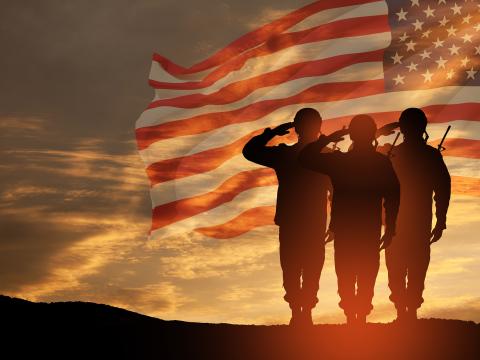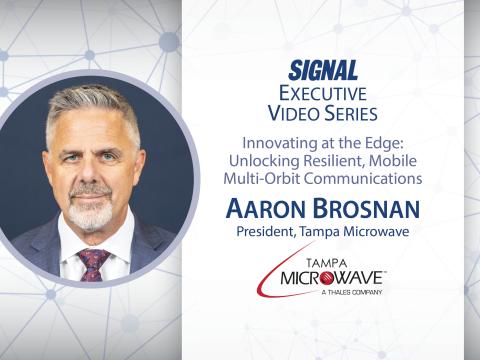Ensuring FirstNet Connectivity During the COVID-19 Crisis
The COVID-19 pandemic, which to date has sickened tens of thousands of Americans and killed hundreds, is testing the viability of the FirstNet network in ways never seen before. The exponential increase in the number of cases in the country is pulling in more and more emergency medical services personnel, police officers, firefighters and other public safety officials, often in more remote areas, who all need real-time data exchange, network connectivity and communication tools.
The horrific attacks on 9/11 first illuminated the need for greater interoperability in communications among first responders. In 2012, acting on recommendations from the 9/11 Commission, Congress passed the Middle Class Tax Relief and Job Creation Act, which established the First Responder Network Authority, known as the FirstNet Authority. The law provided $7 billion and 20 megahertz of electromagnetic spectrum for the public-private partnership development of the FirstNet nationwide first-responder broadband network.
In 2017, the FirstNet Authority awarded a 25-year, $6.5 billion contract for AT&T to build, operate and maintain the high-speed network. Since then, the requirement to share information and communicate effectively via the federally mandated network during natural disasters, fires, crimes or other catastrophes in the United States has only increased.
The COVID-19 pandemic has dramatically raised the need for secure first responder and health care communications, according to AT&T officials.
“We have a Response Operations Group, which basically works with all of the state emergency operations centers, so we have a rehearsed process,” said AT&T’s Joe O’Bryan, associate vice president, Public Safety, Global Public Sector. “I think one difference here is the scale. Normally you're working with a hurricane or flooding in a certain area, but here you got the whole country at the same time. And it is sort of hitting certain areas before others, so we are able to work with that, but the scale of it is different this time.”
O’Bryan and Jeff Derogatis, client solutions executive, Public Safety, AT&T Global Public Sector, spoke to SIGNAL Magazine in a phone interview. The executives support clients and agencies in the federal government, including the Department of Homeland Security, and they shared how AT&T is increasing the deployment of FirstNet across the United States during the crisis.
The company is positioning FirstNet liaisons with state and federal emergency operations centers (EOCs) that help strengthen the responders’ command and control of their network. The liaisons make sure First Responders have mobile connectivity as well as the appropriate communication devices needed to effectively respond to COVID-19.
“We're supporting the entire response community— fire, law enforcement, emergency medical services (EMS), health care providers and hospitals,” O’Bryan explains. “There's a lot of activity out there, with setting up [COVID-19] testing centers. What we have to do is make sure that the first responders and health care experts that are manning these centers have connectivity, prior to them setting up. As soon as we get word that a certain area is going to be a testing center or there's going to be a lot of traffic in a certain area, we go out and check the wireless connectivity in the area and our network teams make adjustments.”
“Some of the customers we work with were early adopters to FirstNet,” added Derogatis. “They kind of saw the vision of what we were talking about with being able to communicate in times of crisis and saturation. They are really seeing kind of an advantage and a sense of security when they're communicating. That's something as a team we’ve worked hard with DHS on, so it's really great to see your customers being able to communicate and take advantage of the solution that you know will help them during crisis.”
FirstNet was designed to make sure that communications get through during a crisis, O’Bryan explained. “It's the perfect solution,” he offered. “It provides wireless preemption and prioritization for the response community. ‘All circuits are busy right now,’…. you don’t get that with FirstNet because first responders have prioritization, their calls go first. And then on top of that they can get preemption so that they don't have to wait for a line to clear. Preemption means we drop somebody. We drop calls for first responders to be able to get through. FirstNet is an essential service at this time.”
Public safety officials also have access to a dedicated FirstNet fleet of 76 deployable cell sites, which includes vehicles, three drones and one FirstNet Blimp, O’Bryan noted. Prior to centers or temporary hospitals being set up around the country to treat patients or test for COVID-19, AT&T is going to the locations to make sure that the wireless network will work, “is top notch and can handle the load,” he said. “If it can't, we would augment the network. We would add facilities there to make sure it can handle the load. One of the ways we do that is with deployables, for example, COWS and COLTS, or a cell on wheels, and a cell on light trucks. We have a dedicated fleet for FirstNet of 76 vehicles that we can deploy anywhere within the country within a certain number of hours.”
The company has already sent communication assets, has optimized the network or provided FirstNet-enabled technology to: the Port of Oakland, Riverside, and San Diego, California; New Haven, Connecticut; Atlanta, Marietta, Rutledge, and Fulton County, Georgia; Nassau County, New York; and San Antonio, Texas; to support quarantine zones, airports, EOCs and other public safety centers. “We have a war room dedicated to devices,” Derogatis said. “Inventory is a big key to be able to support our customers and we have a team dedicated to triage all the requests for the devices.”
The officials also confirmed that more and more first responder communities are signing up for First Net. “We are seeing a lot of local agencies that hadn’t maybe taken advantage of the FirstNet service previously are signing up,” O’Bryan noted. “So, we are putting a lot of them on the network now. In the last week we had a big bump up in the number of agencies signing up for the service.”
So far, FirstNet has been able to withstand more network traffic and additional users as the pandemic grows, the executives say.
“Fortunately, we have plenty of capacity,” O’Bryan stated. “They are making adjustments to the network and watching it carefully, monitoring it to make sure that we are covering this. It is a big robust network and it can handle a lot. With careful management, I think we should be okay.
You may also be interested in…….
NIST Takes Interoperability to New Heights





Comments